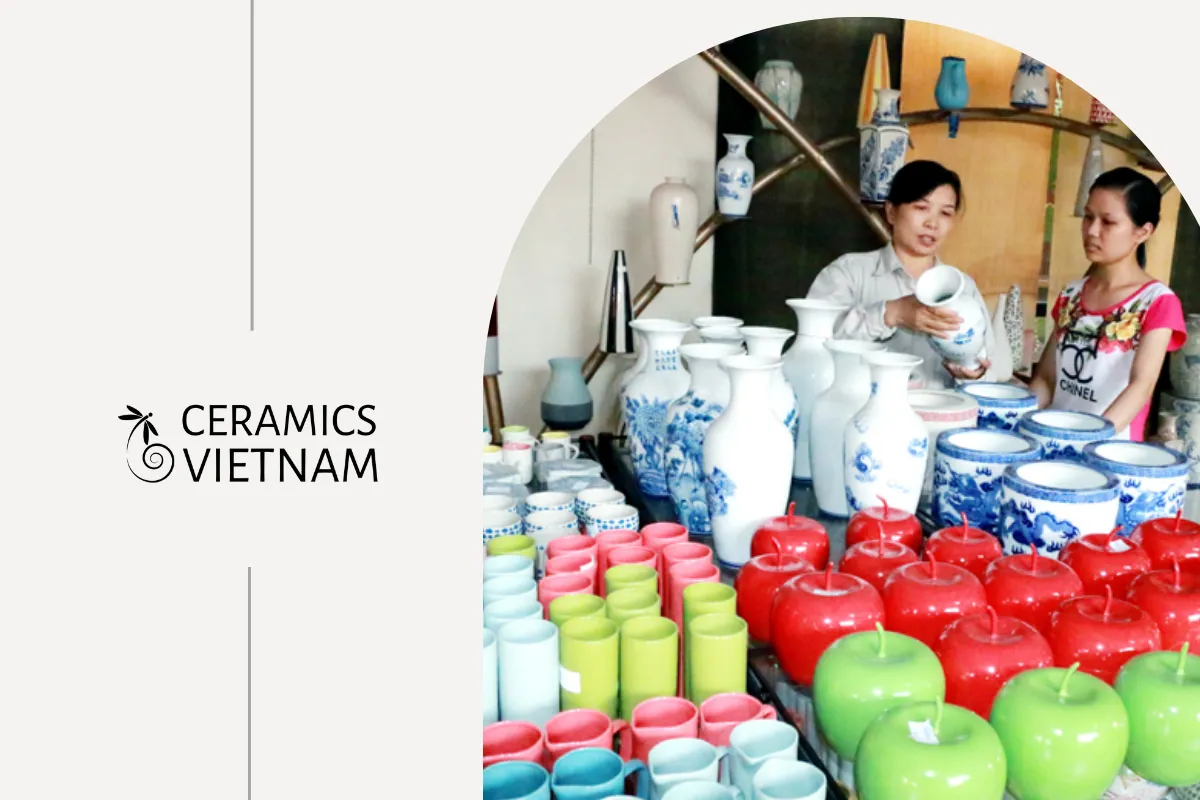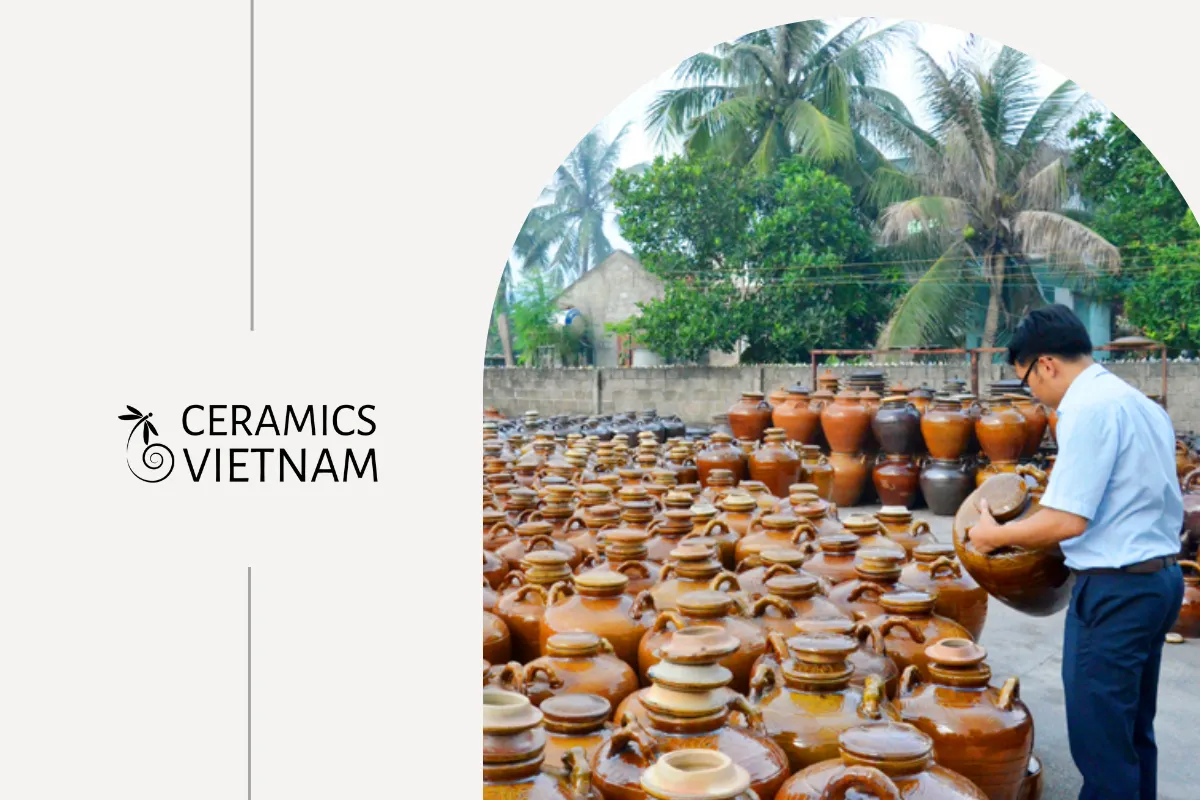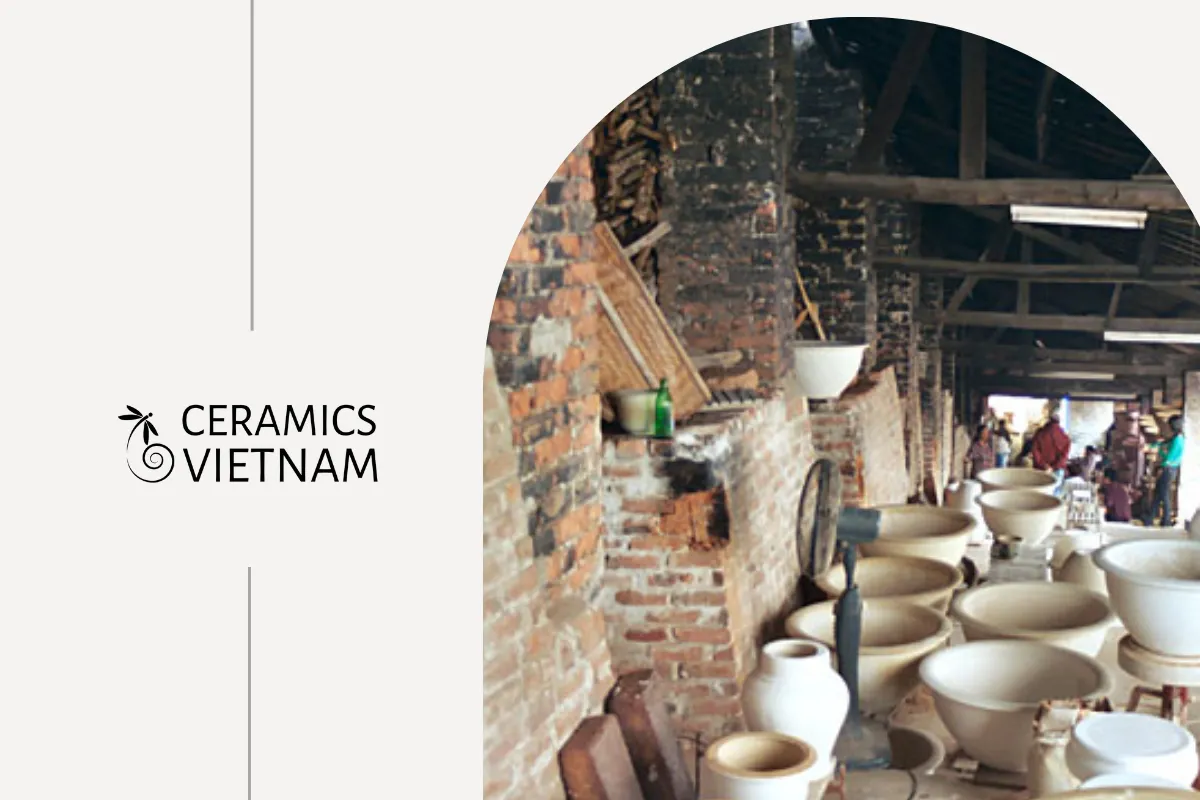For generations, the craft village of Dong Trieu Ceramics in Quang Ninh has been renowned for its exceptional fire-hardened ceramic products. Nestled in the heart of the traditional pottery village of Cau Dat, Vinh Hong, this artisanal community has earned enduring fame. The distinctive charm of Dong Trieu’s fire-hardened pottery lies in its rustic, natural aesthetics and remarkable durability, achieved through the meticulous high-temperature firing technique. Despite facing numerous challenges and transformations over time, the dedicated artisans of this region continue to stoke the flames of their passion, tirelessly nurturing their traditional craft, day and night.
When Quang Ninh is mentioned, coal production often takes the spotlight. However, in Dong Trieu district, located approximately 60km from Ha Long city, a different legacy shines through – the time-honored art of ceramics. Within Dong Trieu, villages like Cau Dat, Vinh Hong, Mao Khe ward, and Dong Trieu town boast a rich heritage spanning nearly two centuries. These pottery communities have nurtured a tradition of crafting high-quality ceramics, which have found widespread popularity in the market. Remarkably, each of these fine ceramic lines carries the name of its production area, giving birth to the renowned Dong Trieu pottery.
The history of Dong Trieu pottery village
Dong Trieu ceramics, while relatively young in the realm of pottery villages, boasts a history that spans nearly 200 years. However, its most vibrant and transformative period unfolded during the tumultuous 1960s and 1970s, a time when the nation was embroiled in the North-South conflict. It was during these trying years that the air in each village was filled with the humming of countless kilns, tirelessly producing hundreds of thousands of Dong Trieu ceramic pieces annually. These ceramics assumed a pivotal role in supporting the resistance war effort and meeting the demands of the northern regions.
As time surged forward, the embrace of modern technology gradually overshadowed the traditional craftsmanship of pottery making. The craft villages that once thrived began to dwindle, and many families found themselves dismantling their ancestral pottery kilns. The rise of plastic, stainless steel, and aluminum products in the market added further pressure to the survival of traditional pottery.
Presently, Dong Trieu town stands as a testament to resilience, with 11 enterprises and cooperatives, 25 households wholly dedicated to ceramic production, and over 30 households specializing in the creation of fine art ceramics. These craft villages are concentrated in the communes and wards of Yen Tho, Xuan Son, Binh Duong, Vinh Hong, and Duc Chinh.
While the annals of history have turned countless pages, in the tranquil corners of the Fourth War Zone’s ancestral soil, the eternal flame of traditional pottery craftsmanship continues to burn brightly. Here, the enduring passion of artisans ignites the creation of timeless pieces, weaving an age-old narrative of persistence, artistry, and cultural significance. Dong Trieu ceramics not only reflect the past but also endure as symbols of a rich heritage that refuses to be extinguished.
Distinctive features of Dong Trieu ceramics

Distinctive features of Dong Trieu ceramics
Dong Trieu pottery, a testament to the exceptional craftsmanship of the artisans in Dong Trieu pottery village, possesses unique characteristics that set it apart from other ceramic lines. This distinction begins with its primary raw material, kaolin, carefully selected and refined to perfection. Subsequently, the ceramics undergo a high-temperature firing process, endowing them with remarkable heat resistance, an impeccably even and clear glaze, and outstanding durability. The ceramics exude a smooth whiteness and unparalleled beauty, devoid of any impurities, making them highly coveted among discerning consumers.
Artisans in this village emphasize the significance of heavy-fire pottery, attributing equal importance to every stage of its creation. The production of heavy-fired Dong Trieu pottery remains primarily a manual endeavor, requiring the skilled hands of craftsmen at every step.
Starting with the raw materials, kaolin, and clay, Dong Trieu potters meticulously sift and purify the materials, transforming them into a soft, pliable clay with the right composition. This meticulous attention to detail ensures that only clean, carefully filtered clay is used, as any impurities would mar the final product.
Once the materials are prepared, artisans expertly shape the clay, crafting soft curves and intricate designs either on a turntable or through meticulous handwork. Since the entire production process is devoid of machinery, creating a single ceramic piece demands a considerable amount of time and painstaking effort. Following the shaping phase, artisans move on to the decoration stage. While some products may share molds, their textures and patterns differ significantly. Each piece created by these skilled craftsmen tells a unique story, featuring depictions of mountains, landscapes, people, and more, transforming each item into a work of art.
As each stage unfolds, from shaping the pottery to imbuing it with artistic flair, the artisans infuse their love for their craft and their very souls into their work. The culmination of this intricate process takes place during the firing stage, where the ceramics are subjected to high temperatures. Typically, the firing temperature ranges from 1,300 to 1,400 degrees Celsius, with the duration varying from 4 to 5 hours depending on the product’s size and shape. Given that Dong Trieu specializes in heavy-fired pottery, its kilns are all wood-fired. This method is more intricate than industrial furnaces, requiring the artisan to meticulously manage and control the fire’s alignment. This ensures that the flames precisely reach the beginning, end, or middle of the furnace at each interval. As different types of firewood yield varying glaze colors and temperatures during combustion, the layers of ash and firewood residue contribute to the distinct patterns and highlights on the glaze.
At each juncture of the process, stringent quality control measures are in place, guaranteeing the creation of impeccable, flawless pieces of artistry.

Dong Trieu Ceramics Village – Preserving Tradition in Quang Ninh Coastal Land
The elaborate production process of Dong Trieu ceramics
Dong Trieu ceramics are a testament to meticulous craftsmanship, and their production process involves a series of intricate steps, each demanding attention to detail and skill. Here’s a detailed breakdown of the journey from raw materials to the exquisite final product:
Clay selection and impurity removal
The foundation of every Dong Trieu ceramic piece lies in the careful selection of clay. Artisans begin by selecting high-quality clay and meticulously removing any impurities. This critical step ensures that the raw material is of the utmost purity and quality.
Shaping and molding
With pristine clay in hand, skilled craftsmen and craftswomen embark on the process of shaping the ceramic pieces. This stage can be likened to sculpting, where artisans use their expertise to create the desired forms. Whether it’s crafting soft, elegant curves or intricate designs, the shaping process requires precision and artistry.
Ornate artistry and decoration
Dong Trieu ceramics are renowned for their intricate decorations, and this is where the magic truly happens. Artisans adorn each piece with elaborate patterns and designs, with each motif telling a unique story. These decorations can range from depictions of serene landscapes and majestic mountains to intricate portrayals of people and their daily lives.
Glazing for aesthetic and protective enhancement

The elaborate production process of Dong Trieu ceramics
To achieve the signature smooth and visually stunning finish, the ceramics undergo a meticulous glazing process. This step not only enhances the aesthetics of the pieces but also adds an extra protective layer. The glaze, carefully applied, ensures the ceramics maintain their beauty and durability over time.
High-temperature firing: The heavy-fire process
A defining characteristic of Dong Trieu ceramics is the heavy-fire process, requiring the ceramics to endure exceptionally high temperatures during firing. Typically, the ceramics are subjected to temperatures ranging from 1300 to 1800 degrees Celsius. This intense firing is a critical step that imparts the ceramics with their signature attributes, including exceptional heat resistance, an even and clear glaze, and outstanding durability.
Meticulous quality control
At each stage of this intricate process, artisans maintain strict quality control measures. This ensures that every piece that emerges from the kiln is flawless and meets the high standards expected of Dong Trieu ceramics.
In sum, the production of Dong Trieu ceramics is a labor-intensive journey, where each stage is a testament to the dedication and expertise of the artisans. The result is not just a beautiful piece of art but also a durable and culturally significant creation that embodies the essence of Dong Trieu’s rich ceramic heritage.
Read more













Leave a reply